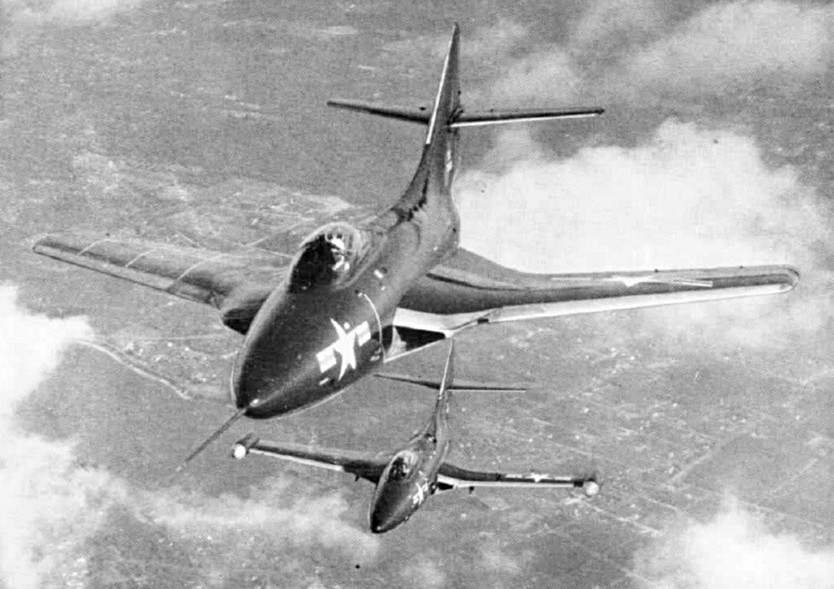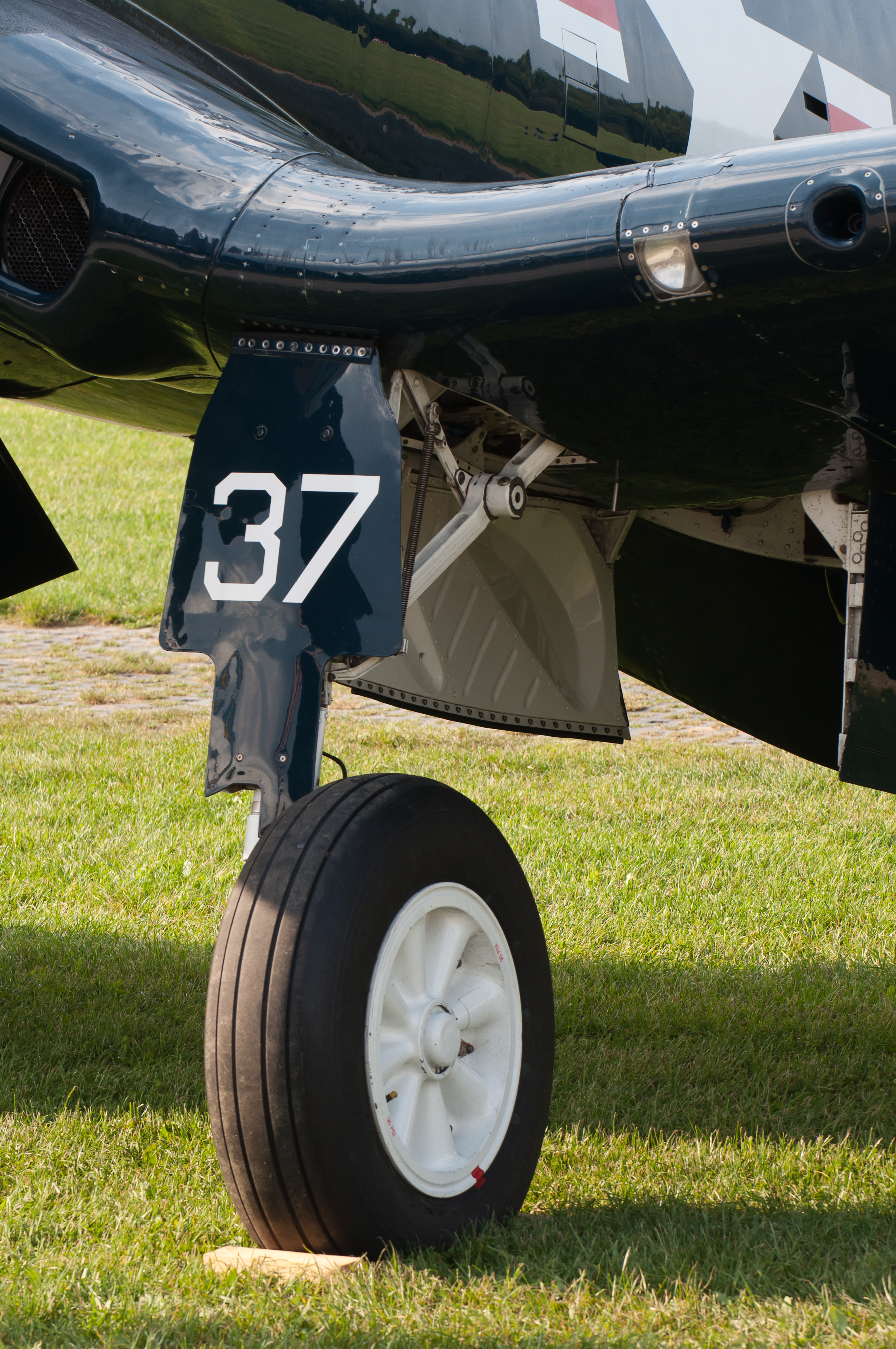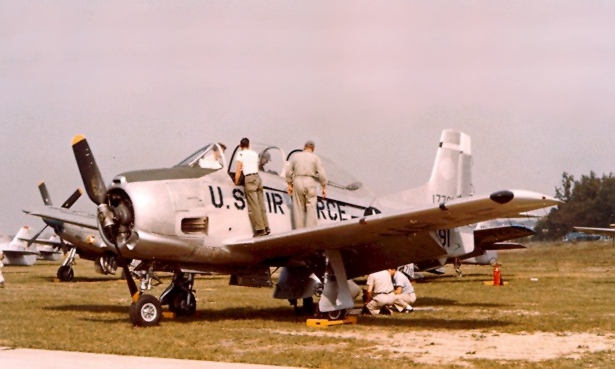|
KAI Aerospace Museum
The KAI Aerospace Museum is an aerospace museum in Sacheon, South Korea located at adjacent to Sacheon Airport. Aircraft on display Helicopters * Bell UH-1B-BF 64-14003 (Construction Number 1127). This helicopter was purchased by the United States Army in April 1965. In October 1970, it joined the 129th Assault Helicopter Company, part of the 10th Combat Aviation Battalion then serving in Vietnam. 64-14003 flew as a gunship with the 129th AHC until January 1971, logging 150 hours with the unit. At this time, the 129th AHC flew primarily in support of the Capital Republic of Korea Infantry Division (CRID). 64-14003 was Military Aircraft Storage and Disposition Center (MASDC) on July 14, 1976 before being transferred to the South Korean armed forces in 1977. 64-14003 was operated by the ROKAF as a utility and search-and-rescue helicopter until its retirement. The aircraft still wears "공군" markings it wore during its service with the ROKAF. * Sikorsky UH-19D 56-4283 (Manufact ... [...More Info...] [...Related Items...] OR: [Wikipedia] [Google] [Baidu] |
Sacheon
Sacheon () is a city in South Gyeongsang Province, South Korea. Sacheon's chief fame comes from its being the site of two naval battles in the Seven Year War. The city as it now exists results from the merging of Sacheon-gun and Samcheonpo-si in 1995. The northern part of the city is called Sacheon-eub and is located at the top of Sacheon Bay, near the city of Jinju. The southern part of the city is located in the old Samcheonpo-si, which is located at the mouth of Sacheon Bay. History and cultural heritage During prehistoric times, the local area was very important for trade between the interior and coastal area. A large central settlement called the Igeum-dong site developed in the neighbourhood of the same name in Samcheonpo. This complex site was a major settlement, megalithic cemetery, and ceremonial area during the latter part of the Middle Mumun pottery period (c. 700-550 B.C.). Several islands that lie just off the coast of Samcheonpo, including Neuk-do Island and Ma-do I ... [...More Info...] [...Related Items...] OR: [Wikipedia] [Google] [Baidu] |
Fairchild C-123 Provider
The Fairchild C-123 Provider is an American military transport aircraft designed by Chase Aircraft and then built by Fairchild Aircraft for the U.S. Air Force. In addition to its USAF service, which included later service with the Air Force Reserve and the Air National Guard, it also went on to serve most notably with the U.S. Coast Guard and various air forces in Southeast Asia. During the War in Vietnam, the C-123 was used to deliver supplies, to evacuate the wounded, and also used to spray Agent Orange. Design and development The C-123 Provider was designed originally as an assault glider aircraft for the United States Air Force (USAF) by Chase Aircraft as the XCG-20 (Chase designation MS-8 Avitruc)Gunston 1980a, p. 170. Two powered variants of the XCG-20 were developed during the early 1950s, as the XC-123 and XC-123A. The only difference between the two was the type of engines used. The XC-123 used two Pratt & Whitney R-2800-23 air-cooled radial piston engines, whil ... [...More Info...] [...Related Items...] OR: [Wikipedia] [Google] [Baidu] |
North American F-86D Sabre
The North American F-86D/K/L Sabre (initially known as the YF-95 and widely known informally as the "Sabre Dog",) was an American transonic jet fighter aircraft. Developed for the United States Air Force in the late 1940s, it was an interceptor derivative of the North American F-86 Sabre. While the original F-86 Sabre was conceived as a day fighter, the F-86D was specifically developed as an all-weather interceptor. Originally designated as the YF-95 during development and testing, it was re-designated the F-86D before production began, despite only sharing 25% commonality of parts with the original F-86. Production models of the F-86D/K/L differed from other Sabres in that they had a larger fuselage, a larger afterburning engine, and a distinctive nose radome. The most-produced Sabre Dog variants (the "D" and "G" models) also mounted no guns, unlike the Sabre with its six M3 Browning .50 caliber machine guns, instead mounting air-to-air rockets (the "K" and "L" Sabre Dog variant ... [...More Info...] [...Related Items...] OR: [Wikipedia] [Google] [Baidu] |
VT-22
Training Squadron 22 (VT-22) or TRARON TWO TWO, known as the ''Golden Eagles'', callsign "Blazer", is a U.S. Navy strike jet training squadron stationed aboard Naval Air Station Kingsville, flying the T-45C Goshawk. The Golden Eagles are one of four strike jet training squadrons in operation today, and are under the command of Training Air Wing Two. History Training Squadron 22 began as Advanced Training Unit 6 (ATU-6), formed on June 13, 1949 at Naval Air Station Corpus Christi, entrusted with training newly designated Naval Aviators transitioning to jets. ATU-6 flew the TV-1 trainer aircraft, and was the first unit to train Naval Aviators in jet aircraft. That same year, ATU-6 was relocated to Naval Air Station Whiting Field in Milton, Florida, and redesignated as Jet Transitional Training Unit 1 (JTTU-1). JTTU-1 was tasked with not only training new Naval Aviators, but fleet aviators as well, including the Blue Angels during their transition to jet aircraft in the 1940s. ... [...More Info...] [...Related Items...] OR: [Wikipedia] [Google] [Baidu] |
Grumman F-9 Cougar
The Grumman F9F/F-9 Cougar is a carrier-based fighter aircraft for the United States Navy and United States Marine Corps. Based on Grumman's earlier F9F Panther, the Cougar replaced the Panther's straight wing with a more modern swept wing. Thrust was also increased with the installation of a newer, more powerful engine. The Navy considered the Cougar an updated version of the Panther, despite having a different official name, and thus Cougars started off from F9F-6. Design and development Early development Rumors that the Soviet Union had produced a swept-wing fighter had circulated a year before the Mikoyan-Gurevich MiG-15 first appeared at air shows in 1949. Despite the level of activity taking place with swept-wing aircraft, the Navy was not initially focused on the development of such aircraft. This was largely because the Navy's focus at the time was defending the battle group against high speed, high altitude bombers with interceptors, as well as escorting medium-rang ... [...More Info...] [...Related Items...] OR: [Wikipedia] [Google] [Baidu] |
Vought F4U Corsair
The Vought F4U Corsair is an American fighter aircraft which saw service primarily in World War II and the Korean War. Designed and initially manufactured by Chance Vought, the Corsair was soon in great demand; additional production contracts were given to Goodyear, whose Corsairs were designated FG, and Brewster, designated F3A. The Corsair was designed and operated as a carrier-based aircraft, and entered service in large numbers with the U.S. Navy in late 1944 and early 1945. It quickly became one of the most capable carrier-based fighter-bombers of World War II. Some Japanese pilots regarded it as the most formidable American fighter of World War II and its naval aviators achieved an 11:1 kill ratio. Early problems with carrier landings and logistics led to it being eclipsed as the dominant carrier-based fighter by the Grumman F6F Hellcat, powered by the same Double Wasp engine first flown on the Corsair's initial prototype in 1940. Instead, the Corsair's early deployme ... [...More Info...] [...Related Items...] OR: [Wikipedia] [Google] [Baidu] |
KAI T-50 Golden Eagle
The KAI T-50 Golden Eagle (골든이글) is a family of South Korean supersonic advanced jet trainers and light combat aircraft, developed by Korea Aerospace Industries (KAI) with Lockheed Martin. The T-50 is South Korea's first indigenous supersonic aircraft and one of the world's few supersonic trainers."Domestic Light Attack Jets Due in 2013" . , 30 December 2008. Development began in the late 1990s, and its occurred in 2002. The aircraft entered active service with the |
Cessna T-37 Tweet
The Cessna T-37 Tweet (designated Model 318 by Cessna) is a small, economical twin-engined jet trainer type which flew for decades as a primary trainer for the United States Air Force (USAF) and in the air forces of several other nations. The T-37C was also capable of light attack. The A-37 Dragonfly variant served in the light attack role during the Vietnam War and continues to serve in the air forces of several South American nations. DoD 4120-15L, ''Model Designation of Military Aerospace Vehicles'' US DoD, 12 May 2004. The T-37 served as the U.S. Air Force's primary pilot training vehicle for over 52 years after its first flight. After completing initial training in the Tweet, students moved on to other advanced Air F ... [...More Info...] [...Related Items...] OR: [Wikipedia] [Google] [Baidu] |
Lockheed T-33
The Lockheed T-33 Shooting Star (or T-Bird) is an American subsonic jet trainer. It was produced by Lockheed and made its first flight in 1948. The T-33 was developed from the Lockheed P-80/F-80 starting as TP-80C/TF-80C in development, then designated T-33A. It was used by the U.S. Navy initially as TO-2, then TV-2, and after 1962, T-33B. The last operator of the T-33, the Bolivian Air Force, retired the type in July 2017, after 44 years of service. Design and development The T-33 was developed from the Lockheed P-80/F-80 by lengthening the fuselage by slightly more than 3 feet (1 m) and adding a second seat, instrumentation, and flight controls. It was initially designated as a variant of the P-80/F-80, the TP-80C/TF-80C. Design work on the Lockheed P-80 began in 1943, with the first flight on 8 January 1944. Following on the Bell P-59, the P-80 became the first jet fighter to enter full squadron service in the United States Army Air Forces. As more advanced je ... [...More Info...] [...Related Items...] OR: [Wikipedia] [Google] [Baidu] |
North American T-28 Trojan
The North American Aviation T-28 Trojan is a radial-engine military trainer aircraft manufactured by North American Aviation and used by the United States Air Force and United States Navy beginning in the 1950s. Besides its use as a trainer, the T-28 was successfully employed as a counter-insurgency aircraft, primarily during the Vietnam War. It has continued in civilian use as an aerobatics and warbird performer. Design and development On September 24, 1949, the XT-28 (company designation NA-159) was flown for the first time, designed to replace the T-6 Texan. The T-28A arrived at the Air Proving Ground, Eglin Air Force Base, Florida, in mid-June 1950, for suitability tests as an advanced trainer by the 3200th Fighter Test Squadron, with consideration given to its transition, instrument, and gunnery capabilities. Found satisfactory, a contract was issued and between 1950 and 1957, a total of 1,948 were built. Following the T-28's withdrawal from U.S. military service, a numb ... [...More Info...] [...Related Items...] OR: [Wikipedia] [Google] [Baidu] |
North American T-6 Texan
The North American Aviation T-6 Texan is an American single-engined advanced trainer aircraft used to train pilots of the United States Army Air Forces (USAAF), United States Navy, Royal Air Force, Royal Canadian Air Force and other air forces of the British Commonwealth during World War II and into the 1970s. Designed by North American Aviation, the T-6 is known by a variety of designations depending on the model and operating air force. The United States Army Air Corps (USAAC) and USAAF designated it as the AT-6, the United States Navy the SNJ, and British Commonwealth air forces the Harvard, the name by which it is best known outside the US. Starting in 1948, the new United States Air Force (USAF) designated it the T-6, with the USN following in 1962. It remains a popular warbird used for airshow demonstrations and static displays. It has also been used many times to simulate various historical aircraft, including the Japanese Mitsubishi A6M Zero. A total of 15,495 T-6s of a ... [...More Info...] [...Related Items...] OR: [Wikipedia] [Google] [Baidu] |









.jpg)